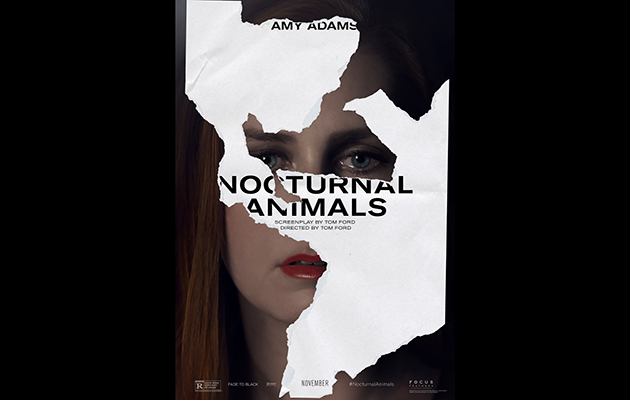
For Ford, Tony seems to represent integrity, a person seeking truth and finding it at great cost. On one hand, it’s a childish thing to do, rubbing her face in her own attraction on the other, it’s the ultimate rejection of what he represents to her. Tony ghosts on Susan at their planned meeting, forcing her to confront her own superficiality, how easily she’s won back. As an artist, Tony’s work turns out to be disturbing and affecting, seducing Susan all over again with what seems to be the only grain of truth in her life. The art world is often criticized for celebrating subversion for subversion’s sake, but here, in light of her ex-husband’s descent into hell, these images take on actual meaning. And as Susan falls deeper into Tony’s novel, these images keep appearing: an animal pierced by arrows a painting on the wall that says “REVENGE” an apparition appearing in a colleague’s cell phone. The movie’s first scene takes place at a gallery opening, where naked obese women dance around on video, a layered misogyny she seems, at most, ambivalent about. Meanwhile, as Susan becomes transfixed by the book, we see a strange mirroring of its violence in the world around her.
Nocturnal animals plot full#
After the breakup, Tony writes the novel he could never manage when he was with Susan, full of the type of vicious, aggressive action she seemed to be encouraging him toward. She leaves him for Hutton Morrow, the kind of stone-hewn alpha male who could only be played by Armie Hammer. They meet as students, but divorce when Susan finds herself exhausted by Tony’s sensitivity, the thing that drew her to him in the first place. First, we have to go back to the beginning, and end, of Tony and Susan’s relationship. It’s in Susan’s narrative that you can begin to suss out the complexity of the plot, which all dovetails in that ending. (Ironically, a common criticism of Ford’s own work.) Tony’s novel is pitch-black and disturbing, and Susan’s real life is aesthetically beautiful but devoid of substance, an empty exercise in wealth and beauty. On the surface, Nocturnal Animals plays as a thriller in the Sam Peckinpah mold, a brutal allegory about the worst natures of men, mostly because of the story-within-the-story. So, what the hell’s going on here? Is this all just a joke on poor Amy Adams? Why did Tony dedicate the book to her?
Nocturnal animals plot movie#
If you really like movies that makes you think and eventually re-watch them over again then this movie is for you.Jake Gyllenhaal Hears the Truth About His Nocturnal Animals Characterīut it’s not that much more depressing than that the ending of Nocturnal Animals, the movie, which closes on Adams’s Susan, sitting at an opulent Los Angeles restaurant, finishing off her second expensive cocktail, waiting for Tony to arrive.

While I was watching the movie I liked Tom Ford's directing style, storytelling, cinematography and after watching it I started to think about it while connecting the dots between the different narratives and it easily became my favorite movie to think about. Overall, I loved this movie for it's visual look and appeal of it's leading characters.


The brilliant Michael Shannon was also in this movie as Bobby Andes with great Oscar worthy performance. Aaron Taylor-Johnson's performance as Ray Marcus was definitely my favorite, he was so creep and repulsive to watch.

Even though a movie with three narratives might sound clumsy but it wasn't, the stories of different time lines did not overlap each other rather it made the story complete with showing different aspects of the characters. The way that the story was told was bold, strange and very unique to me. The plot of the movie which is three narratives combined into one and tells the story of Susan Morrow (Amy Adams) an art gallery owner who receives a manuscript of her ex-husband's (Jake Gyllenhaal) thriller novel dedicated to her. The second film from designer turned directory Tom Ford was not just a visual masterpiece but had great narrative.


 0 kommentar(er)
0 kommentar(er)
